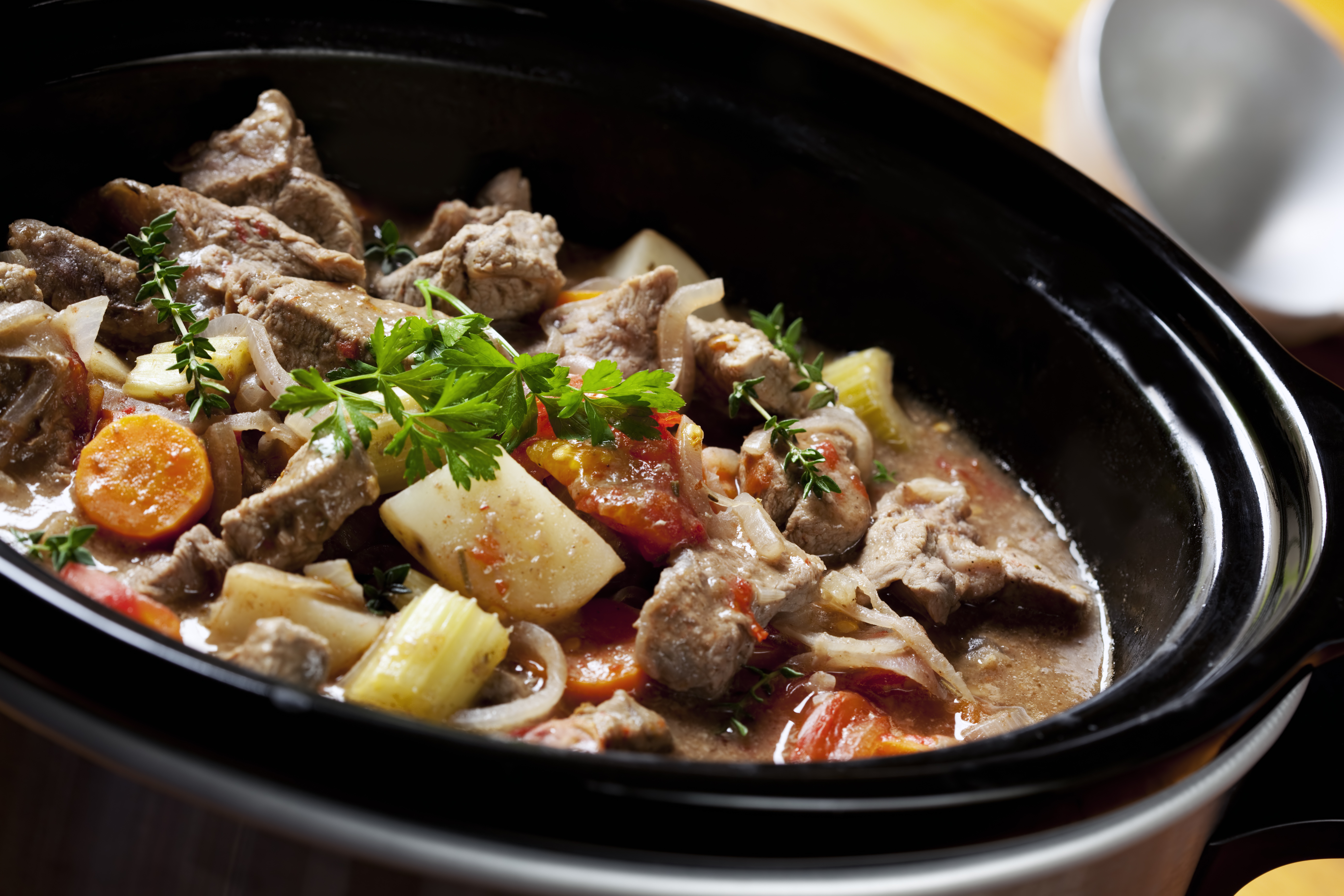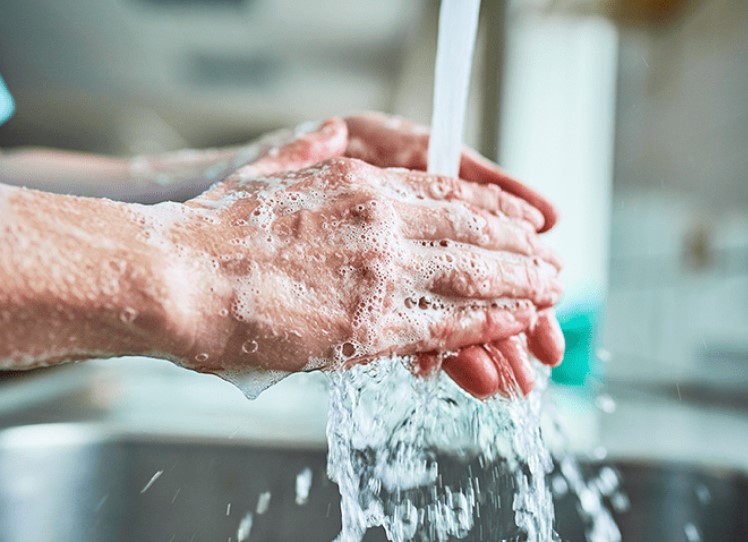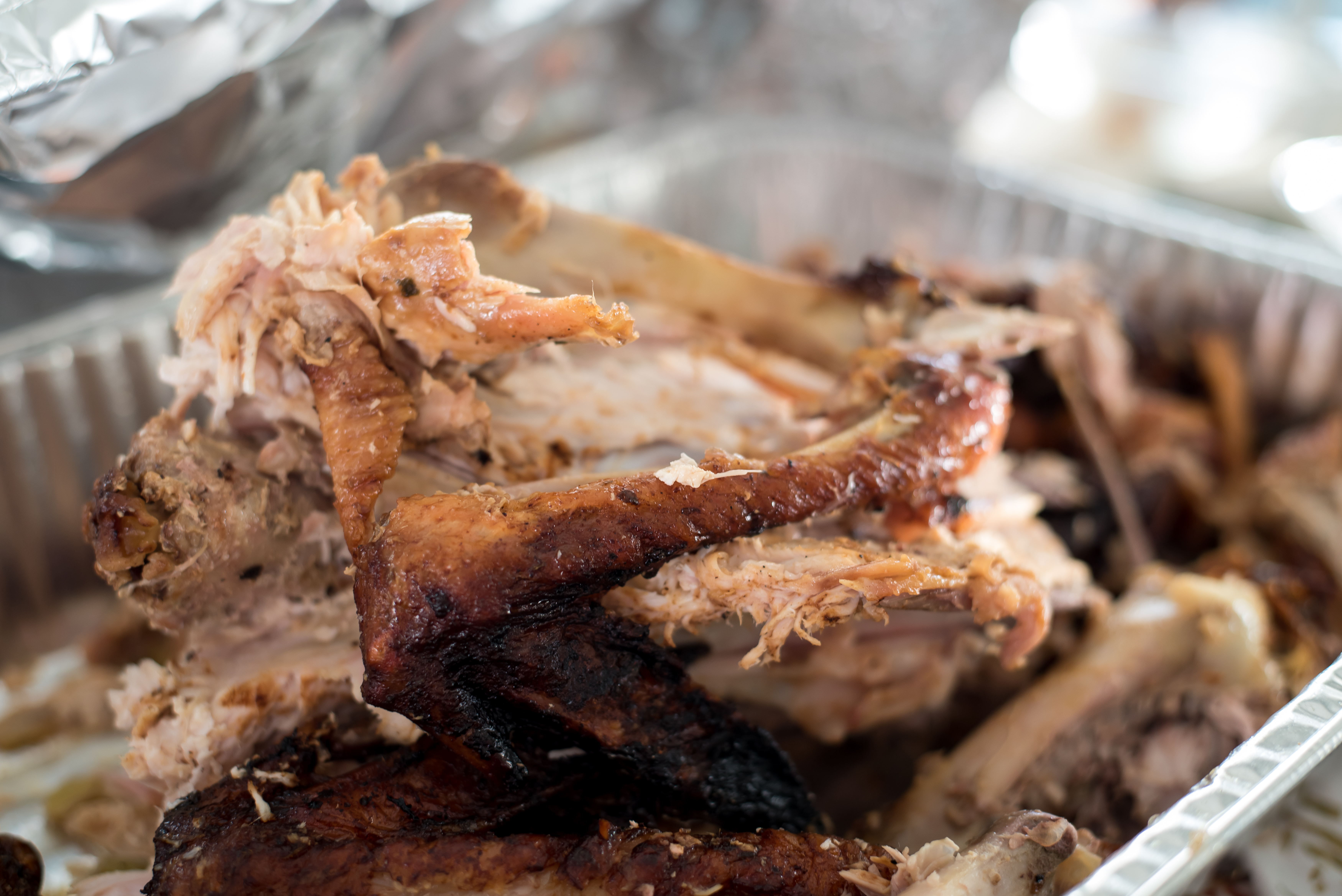
Washing Food: Does it Promote Food Safety?
Historically, people equate washing to cleanliness. We wash clothes, linens, cars, dishes and ourselves. So, it is logical that many people believe meat and poultry will be cleaner and safer by washing it. Is this true? Does washing meat, poultry, eggs, fruits and vegetables make them safer to eat?
Cross-Contamination
Cross-contamination is the transfer of harmful bacteria to food from other foods, cutting boards, and utensils and it happens when they are not handled properly. This is especially true when handling raw meat, poultry, eggs, and seafood, so keep these foods and their juices away from already cooked or ready-to-eat foods and fresh produce.
Handwashing
Hand washing after handling raw meat or poultry or its packaging is a necessity because anything you touch afterwards could become contaminated. In other words, you could become ill by picking up a piece of fruit and eating it after handling raw meat or poultry without properly washing your hands.
Always wash hands before and after handling food; before eating; and after using the bathroom, changing diapers, tending to a sick person, blowing your nose, sneezing, coughing and handling pets. You should also wash your hands after touching surfaces that are frequently used, like doorknobs and handles, light switches, phones and keyboards. There are five steps to handwashing:
- Wet your hands with clean, running water (warm or cold), turn off the tap, and apply soap.
- Lather your hands by rubbing them together with the soap. Lather the backs of your hands, between your fingers, and under your nails.
- Scrub your hands for at least 20 seconds. Need a timer? Hum the “Happy Birthday” song from beginning to end twice.
- Rinse your hands well under clean, running water.
- Dry your hands using a clean towel or air dry them.
Grocery Shopping
Many stores will have disinfecting wipes you can use to wipe down any carts or baskets you may touch during your shopping trip. This step is in addition to safe handling of food and food packaging while you’re in the store. Keep your raw meat, poultry and seafood products separate from any produce or ready-to-eat foods. Use bags to keep these products separate and to prevent juices from cross-contaminating. Wash your hands with soap and water for 20 seconds after going to the grocery store. Avoid touching your face, mouth or nose while grocery shopping.
Packaging materials from raw meat or poultry also can cause cross-contamination. Never reuse disposable packaging materials, such as foam meat trays, egg cartons or plastic wraps, should be discarded immediately after you remove their contents. If you use reusable bags while grocery shopping, be sure to wash them after each use with hot water and soap to prevent the spread of any germs.
Clean and disinfect any surfaces and countertops where you put your groceries after handling and storing them.
Minimize the Risk: Clean and Then Sanitize Surfaces and Sinks
It is important to prevent cross-contamination from raw meat or poultry juices and other contaminants by washing countertops and sinks with hot, soapy water. For extra protection, you should also sanitize utensils and disinfect surfaces with solutions that can eliminate illness-causing germs. If using commercial sanitizers or disinfectants in your kitchen, choose ones that are approved for your kitchen surfaces and follow the manufacturer’s instructions to use each product safely and effectively.
Foodborne illness-causing bacteria can remain on surfaces for a very long time. Campylobacter can survive in your kitchen for up to 4 hours and Salmonella can last for up to 32 hours. Norovirus, often called the stomach flu or a stomach bug, is the most common foodborne illness-causing germ in the United States. Norovirus is a very contagious virus that causes vomiting and diarrhea. It can spread easily if you eat or drink contaminated food or touch contaminated surfaces or objects then put your unwashed hands in your mouth.
1. Clean FIRST.
Cleaning physically removes dirt, debris and some bacteria that can cause illness, including foodborne illness, from your kitchen, but it does not kill germs. To clean your utensils, cuttings boards, surfaces and even the kitchen sink, use warm, soapy water to wash them. Air dry or wipe clean with single-use paper towels. If you use kitchen towels for cleaning, they should be washed frequently using the hot cycle of the washing machine.
2. THEN Sanitize
Sanitizing and disinfecting can kill germs and foodborne illness-causing bacteria in your kitchen, but this is most effective after you have cleaned. Many different sanitizers or disinfectants can be used, but make sure any commercial products you choose are safe for the food contact surfaces in your kitchen before you use them.
Use Sanitizers for Cutting Boards and Utensils
Only use sanitizing products that are intended for use on cutting boards or utensils that touch food. An easy, food-safe homemade sanitizer for cutting boards, knives and other utensils that directly touch food can be made by mixing a solution of one tablespoon of unscented liquid chlorine bleach with a gallon of water. To sanitize utensils and cutting boards after cleaning, pour sanitizing solution on the cutting boards and let it stand for several minutes or use it as a soak for your utensils. Next, rinse them with clean water and air dry or pat them dry with clean towels.
If using commercial sanitizers, make sure they are approved for use on cutting boards or utensils before using for this purpose. Follow the manufacturer’s instructions on the label for safe use. Some commercial sanitizers may require utensils to be rinsed after use.
Your dishwasher can also effectively clean and sanitize your utensils and cutting boards if they are dishwasher safe and are made of materials that are non-porous (e.g., acrylic, plastic, glass and some solid wood boards without cracks or scratches).
Use Disinfectants for Surfaces, Countertops and Sinks
Disinfecting products, unlike some commercial sanitizers, should NOT be used on cutting boards or utensils that touch food because they could contaminate the food you prepare. However, disinfectants are safe to use on surfaces and high touch areas in order to destroy bacteria.
According to the CDC, a homemade disinfectant for surfaces can be made by mixing a solution of five tablespoons (one-third cup) of unscented liquid chlorine bleach to one gallon of water or four teaspoons of bleach per quart of water. You should use gloves to protect your hands before using disinfectant solutions. Pour or spray your homemade disinfectant on sinks, countertops and other surfaces, then let it sit for at least one minute before wiping your surfaces clean with a paper towel. Be sure they are completely dry before using those surfaces or your sink again.
If using commercial disinfectants, make sure they are approved for use on your surfaces and completely follow the manufacturer’s instructions on the label. Some commercial disinfectants may require your surfaces to be rinsed with clean water after use.
After cleaning and then sanitizing or disinfecting anything in your home, make sure to wash your hands with soap and water for 20 seconds.
Washing Meat and Poultry
Washing meat or poultry can mean different things to different people.
Many consumers wash or rinse their meat or poultry before cooking it. Washing meat or poultry can mean different things to different people: some consumers rinse it under running water or with a strainer, others soak it in containers full of water and some use saltwater, vinegar or lemon juice. Some consumers may wash or rinse their raw meat or poultry because it’s a habit or because a family member they trust has always washed their meat. USDA research has found that washing or rinsing meat or poultry increases the risk for cross-contamination in the kitchen, which can cause foodborne illness.
From a food safety perspective, washing raw poultry, beef, pork, lamb or veal before cooking it is not recommended as the safest method. If you wash meat or poultry, some bacteria can be splashed on the surfaces of your kitchen, which can make you sick if not properly cleaned and sanitized. Cooking to the right temperature (whether frying, baking, broiling, boiling or grilling) kills germs on meat and poultry, so washing these products is risky and not necessary for safety.
Never use soaps or detergents on your meat or poultry products. They can contaminate your food with chemicals and make it unsafe to eat.
Using a food thermometer is the only sure way of knowing if your food has reached a high enough temperature to destroy germs, including foodborne illness-causing bacteria.
- Cook all raw beef, pork, lamb and veal (steaks, roasts and chops) to a minimum internal temperature of 145F. For safety and quality, allow meat to rest for at least three minutes before carving or consuming.
- Ground meats are safe to eat at 160F. For burgers, insert the food thermometer in the side of patties until it reaches the center for an accurate reading.
- Poultry products, including whole, parts or ground chicken or turkey, are safe to eat at 165F.
- Cook fish and seafood to 145F or until the flesh is opaque and flaky.
For reasons of personal preference, consumers may choose to cook meat to higher temperatures.
Soaking Meat and Poultry
Callers to the USDA Meat and Poultry Hotline sometimes ask about soaking meat or poultry in saltwater or about using a brine solution. This is a personal preference and serves no purpose for food safety. If you choose to do this, however, preventing cross-contamination when soaking and removing the meat or poultry from the liquid is essential. Carefully pour out the soak and do not reuse it. Wash the container you used for the soak or sanitize it in the dishwasher. Clean and then sanitize your inner sink and any surfaces that touch the used soak. Meat or poultry should be kept in the refrigerator while soaking.
Sometimes consumers rinse or soak country ham, bacon or salt pork because they think it reduces the sodium or salt enough to allow these products to be eaten on a sodium-restricted diet. However, very little salt is removed by washing, rinsing or soaking a meat product and doing so is not recommended.
Washing Other Foods
Washing Eggs
Do not wash eggs from the grocery store before putting them in the refrigerator. Washing is a routine part of commercial egg processing and the eggs do not need to be washed again. "Bloom," the natural coating on just-laid eggs that helps prevent bacteria from permeating the shell, is removed by the commercial washing process. It is replaced by a light coating of edible mineral oil, which restores protection for long-term home storage of eggs. Extra handling of the eggs in your home, such as washing them, could increase the risk of cross-contamination, especially if the shell becomes cracked. For more information, visit Shell Eggs from Farms to Table.
Washing Produce
Before eating or preparing fresh fruits and vegetables, wash the produce under running tap water to remove any lingering dirt. This reduces any germs that may be present. If the fruits or vegetables have a firm surface, such as apples or potatoes, they can be scrubbed with a brush. Consumers should not wash fruits and vegetables with detergent, soap or commercial produce washes. These products are not approved or labeled by the U.S. Food and Drug Administration (FDA) for use on foods. You could ingest residues from soap or detergent absorbed on the produce and get sick.
Make sure your inner sink, countertops and utensils are cleaned and sanitized before you rinse your produce to avoid cross-contamination, especially from surfaces that have touched raw meat, poultry or seafood or their juices. When preparing fruits and vegetables, cut away any damaged or bruised areas because bacteria that can cause illness can thrive in those places. Immediately refrigerate any cut items such as salad or cut fruit for best quality and food safety.
Should I Wash Pre-Washed Produce?
At the store, you may find produce, like bagged salads or some cut and packaged fruits or vegetables, that is labeled as “pre-washed” or “ready-to-eat.” If you see this label, then you can safely use the produce without further washing. If you choose to wash produce marked as “pre-washed” or “ready-to-eat,” be sure that it does not come in contact with unclean surfaces or utensils, especially those that have touched raw meat, poultry or seafood or their juices. This will help to avoid cross-contamination.



